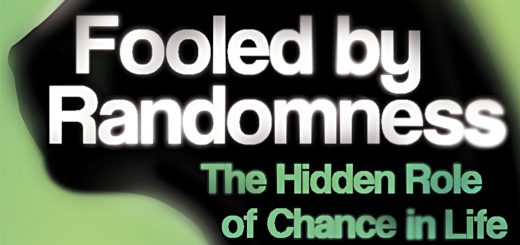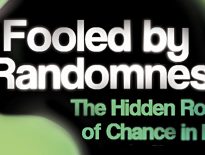Fooled By Randomness 7 – Skepticism & LTCM

Today’s post is our seventh visit to Nassim Nicolas Taleb’s modern classic Fooled By Randomness.
Scepticism
Chapter Thirteen is about scepticism.
In 155 BC, Greek philosopher Carneades of Cyrene came to Rome to beg the Senate that an unfair fine on his city be lifted.
- After winning the case, he came back the next day to argue the opposite case.
Carneades and he colleagues were sent home by “Cato the censor”, in case:
Their argumentative spirit muddle the spirit of the youth of the Republic and weaken the military culture.
Taleb introduces us to other sceptics: Korax, Gorgias, Cicero and Norpois (a character from Proust).
- Eventually, he comes to some trader sceptics.
One of the best traders I have ever encountered in my life, Nigel Babbage, has the remarkable attribute of being completely free of any path dependence in his beliefs.
The public person most visibly endowed with such a trait is George Soros. Real speculators like Soros are totally free from their past actions. Every day is a clean slate.
Taleb notes that this ability to be entirely rational is often associated with defects of the amygdala, which interfere with the emotions of attachment.
- Too much rationality takes us close to psychopathy.
The endowment effect
We are all familiar with the idea that people attach more value to things they already possess.
Taleb used the example of a painting bought for $20K and now worth $40K.
- If we would not buy at the new price, then we should sell.
I take issue with this.
- The part of the endowment effect that needs to be dealt with is the tendency to hold on to losers, not winners.
We might have good reason to believe that the painting will be worth even more in the future.
LTCM
In the next section, Taleb re-runs the maths introduced into economics by Markowitz, culminating in the LTCM debacle.
- Along the way, he has a go at three Nobel Prize winners (as well as the Prize itself and the committee which awards it).
The brains behind LTCM described the events which caused its downfall as a “ten sigma” event.
- Taleb sees this as a Wittgenstein’s ruler problem.
Someone saying this is a ten sigma either (a) knows what he is talking about with near perfection (the prior assumption is that it has one possibility of being unqualified in several billion billions), knows his probabilities, and it is an event that happens once every several times the history of the universe; or (b) just does not know what he is talking about when he talks about probability (with a high degree of certainty), and it is an event that has a probability higher than once every several times the history of the universe.
I will let the reader pick from these two mutually exclusive interpretations which one is more plausible.
The scientist’s behavior while facing the refutation of his ideas has been studied in depth as part of the so-called attribution bias. You attribute your successes to skills, but your failures to randomness, which explains the findings that 80 to 90% of people think that they are above the average in many things.
People confuse science and scientists. Science is great, but individual scientists are dangerous. They are human; they are marred by the biases humans have.
Stoicism
Chapter Fourteen is about stoicism, but I could find little of direct relevance to the markets.
Conclusions
Well, that didn’t take long – we’ve whizzed through the final two chapters of the book (and a postscript).
- To be fair, these chapters were more of a summing up of the general philosophy of the book rather than lessons for private investors.
I’ll be back in a few weeks with a summary of the lessons from the entire book.
- Until next time.














